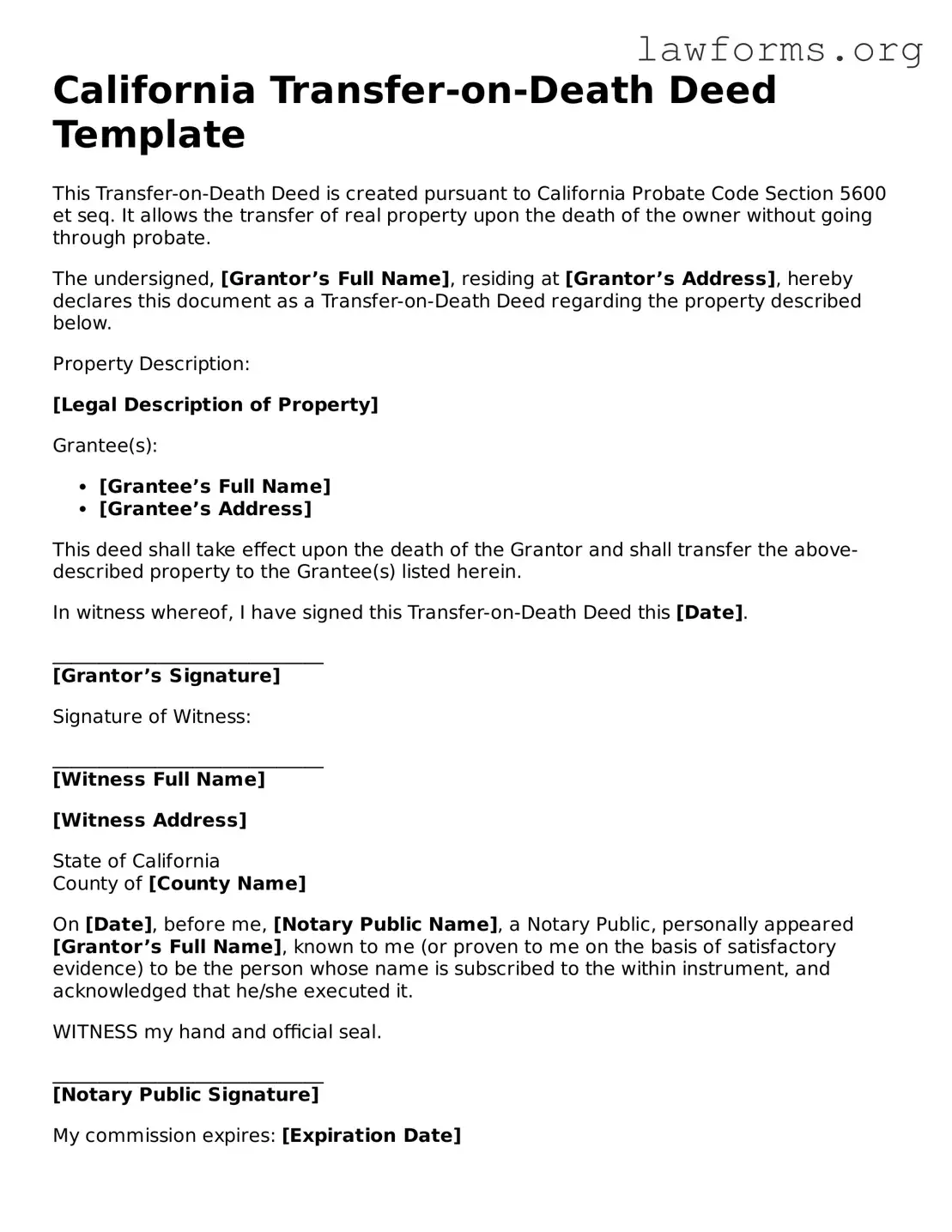California Transfer-on-Death Deed Template
This Transfer-on-Death Deed is created pursuant to California Probate Code Section 5600 et seq. It allows the transfer of real property upon the death of the owner without going through probate.
The undersigned, [Grantor’s Full Name], residing at [Grantor’s Address], hereby declares this document as a Transfer-on-Death Deed regarding the property described below.
Property Description:
[Legal Description of Property]
Grantee(s):
- [Grantee’s Full Name]
- [Grantee’s Address]
This deed shall take effect upon the death of the Grantor and shall transfer the above-described property to the Grantee(s) listed herein.
In witness whereof, I have signed this Transfer-on-Death Deed this [Date].
_____________________________
[Grantor’s Signature]
Signature of Witness:
_____________________________
[Witness Full Name]
[Witness Address]
State of California
County of [County Name]
On [Date], before me, [Notary Public Name], a Notary Public, personally appeared [Grantor’s Full Name], known to me (or proven to me on the basis of satisfactory evidence) to be the person whose name is subscribed to the within instrument, and acknowledged that he/she executed it.
WITNESS my hand and official seal.
_____________________________
[Notary Public Signature]
My commission expires: [Expiration Date]
